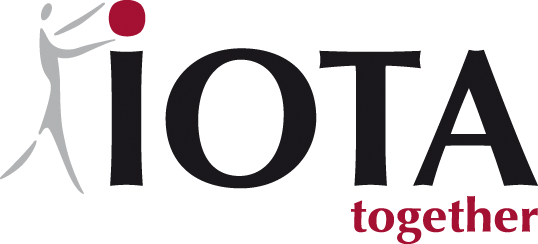
IOTA stands for Internet of Things Application, and it’s a new crypto technology that facilitates transactions between devices on the Internet of Things (IoT). IOTA addresses the transaction fees and scalability issues of blockchain technologies by getting rid of the block and chain. Instead, in order to submit a transaction to the IOTA ledger, you must verify two other previous transactions.
This method of verification means there’s no central ledger, and there’s no need for miners to power the network.
As the devices on the network randomly verify each other’s transactions, they build consensus through the web of connections between transactions. In cryptography, this type of verification is known as Directed Acyclic Graph (DAG), but the creators of IOTA call it the Tangle.
Since computing power in the Tangle grows as the network grows, IOTA is promising free, fast transactions. It’s also designed to process micro-payments and payments between machines, facilitating a whole machine-to-machine micro-economy.
While IOTA makes big promises, the technology is still new, and it’s not without its detractors. In this article, we’ll look at how IOTA works, what it might be used for, some of the criticisms it’s facing, and whether you should invest in the token.
Technical Details
Launched: June 11, 2016
Total coin supply: 2,779,530,283,277,761
Algorithm: Proof of Work (PoW) using a version of SHA-3
Block time/reward: No blocks, verify two transactions to submit your own transaction
The Challenge: Machine to Machine Payments
The Internet of Things is already a major force in the world economy.
Companies are creating cameras, sensors, and other devices to monitor conditions in factories, shipping lanes, farms, stores, and homes. According to research from Gartner, IoT grew to 8.4 billion devices in 2017, and the outlook for future growth is exponential.
IOTA’s vision is to be the platform for machine-to-machine (M2M) transactions. IOTA’s founders started the company after working in the IoT industry, and they argue that in order for IoT to be most useful, the devices in the network need to share and allocate resources efficiently.
This means the devices need to be able to purchase more electricity, bandwidth, storage, or data when they need it, and sell those resources when they don’t need them.
Even on a small network, this means potentially dozens of transactions per second as devices communicate and use resources. With so many transactions, at such a small, fast scale, IOTA’s founders believe blockchain technology isn’t adequate for IoT applications.
Blockchain networks struggle with scalability (as we’re seeing with Bitcoin’s SegWit2x fork debate), and they often resort to charging fees in order for miners to include your transaction in a block sooner. IOTA aims to solve both scalability and fees with its new network so that billions of IoT devices can use it.
Transaction Fees: How IOTA is Free to Use
Since you contribute computing power to the network when you submit a transaction, the cost of using the network is only as great as the electricity needed to verify two other transactions on IOTA. The Tangle allows IOTA to operate fee-free, and it means the network is even more distributed than a blockchain network. With blockchain, the network is distributed among the miners on the blockchain. With the Tangle, the network is distributed among every participating node on the network.
The absence of fees is critical to IOTA’s mission of servicing IoT devices. These devices will often be transacting at fractions of a penny with high frequency. Any fees charged on such small transactions would make micropayments unfeasible. In order to serve as the backbone for the M2M economy, IOTA has to be free to use.

Differenc:
Now, since IOTA is not a Blockchain, we have a lot of differences here.
Here is a small list of differences before I get more into details
IOTA is based on a directed acyclic graph (DAG) aka the Tangle, not a Blockchain
IOTA has no mining, no blocks, no difficulty
IOTA has no transaction fees
IOTA scales almost infinitely, unlike Blockchains
IOTA is not solely made as a currency but as an interoperability protocol that solves the problems of the IoT
IOTA wants to enable the machine economy
IOTA is lead by the IOTA Foundation, an NGO registered in Germany (approx. Oct. 2017)
Hi! I am a robot. I just upvoted you! I found similar content that readers might be interested in:
https://coincentral.com/what-is-iota-cryptocurrency-coin/